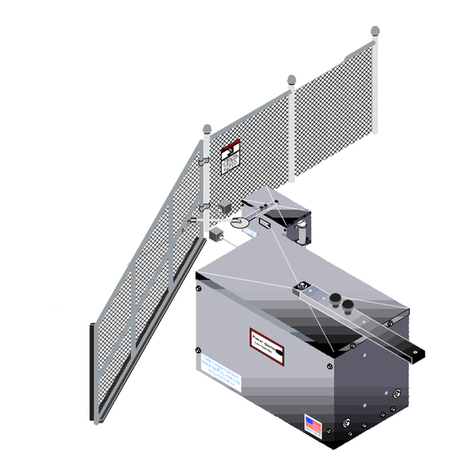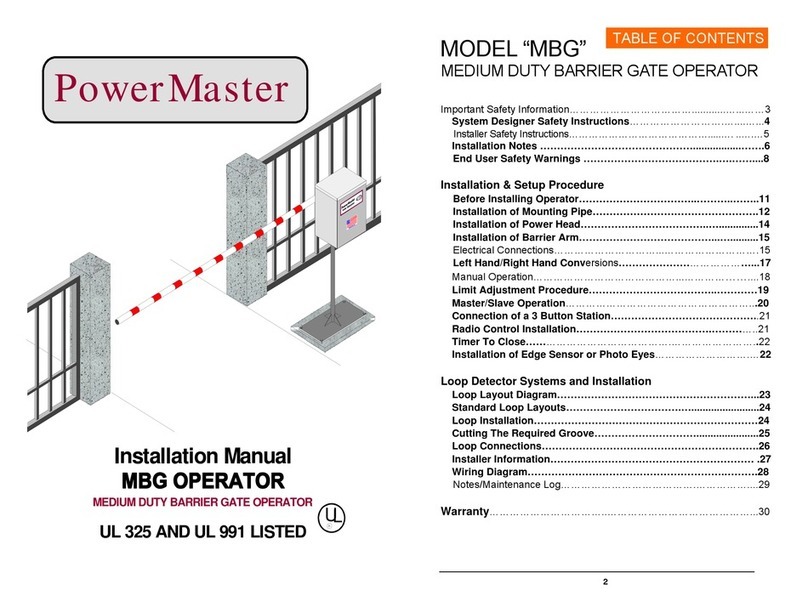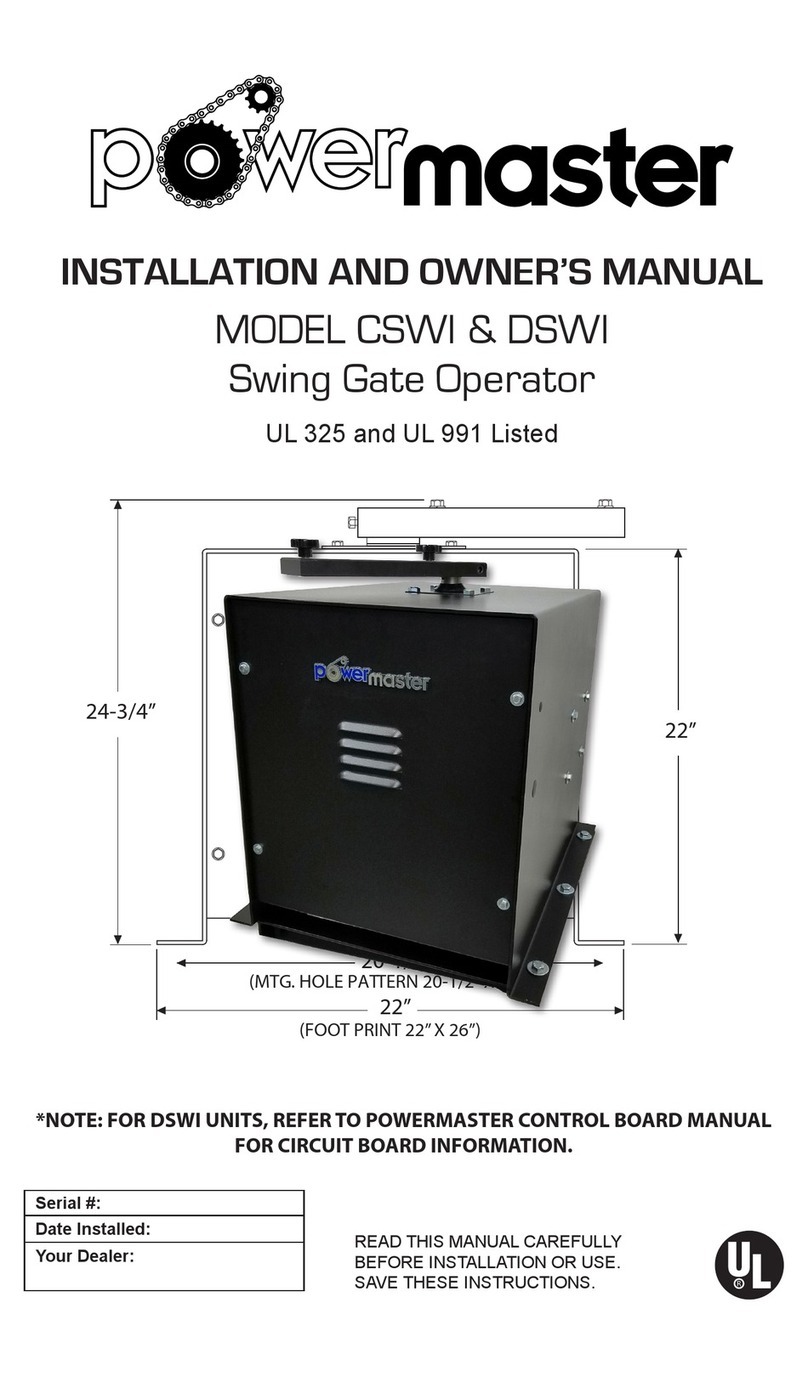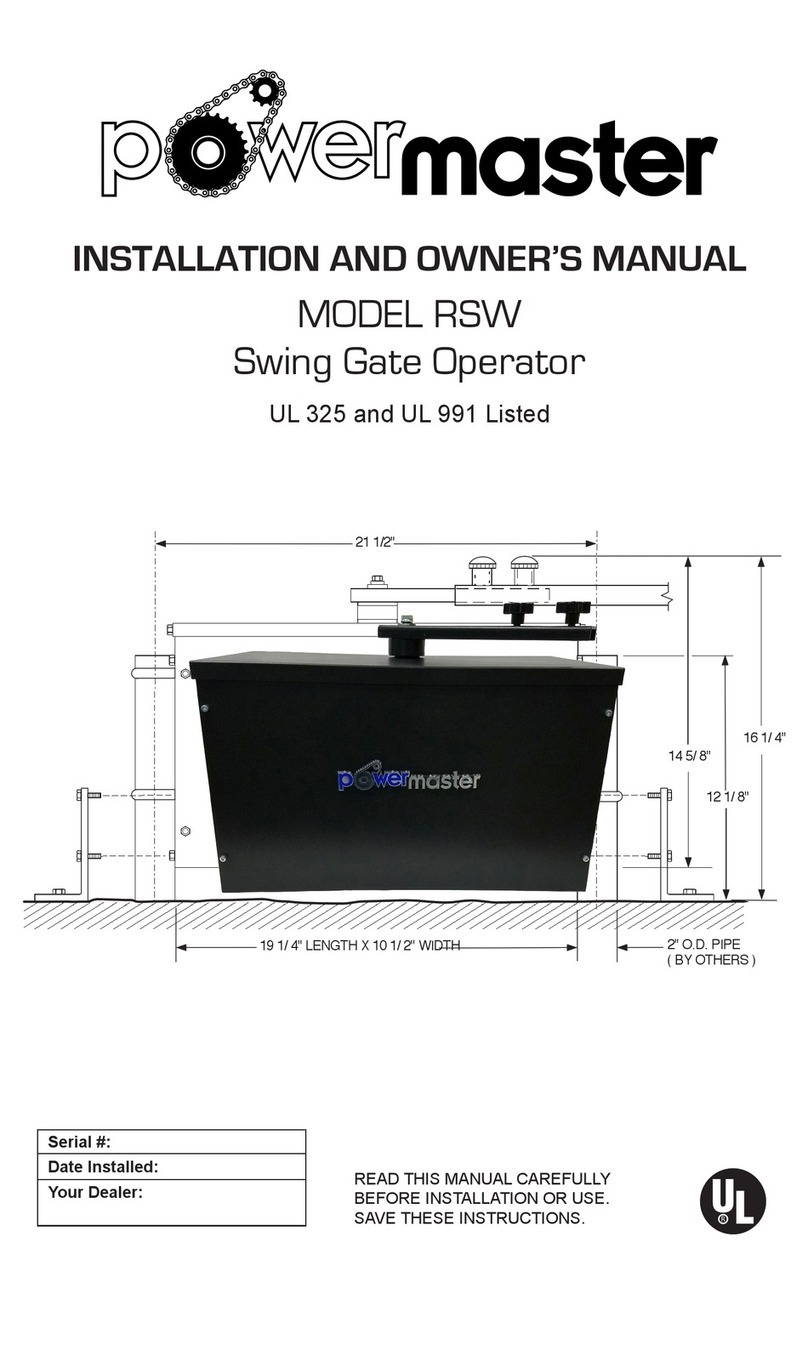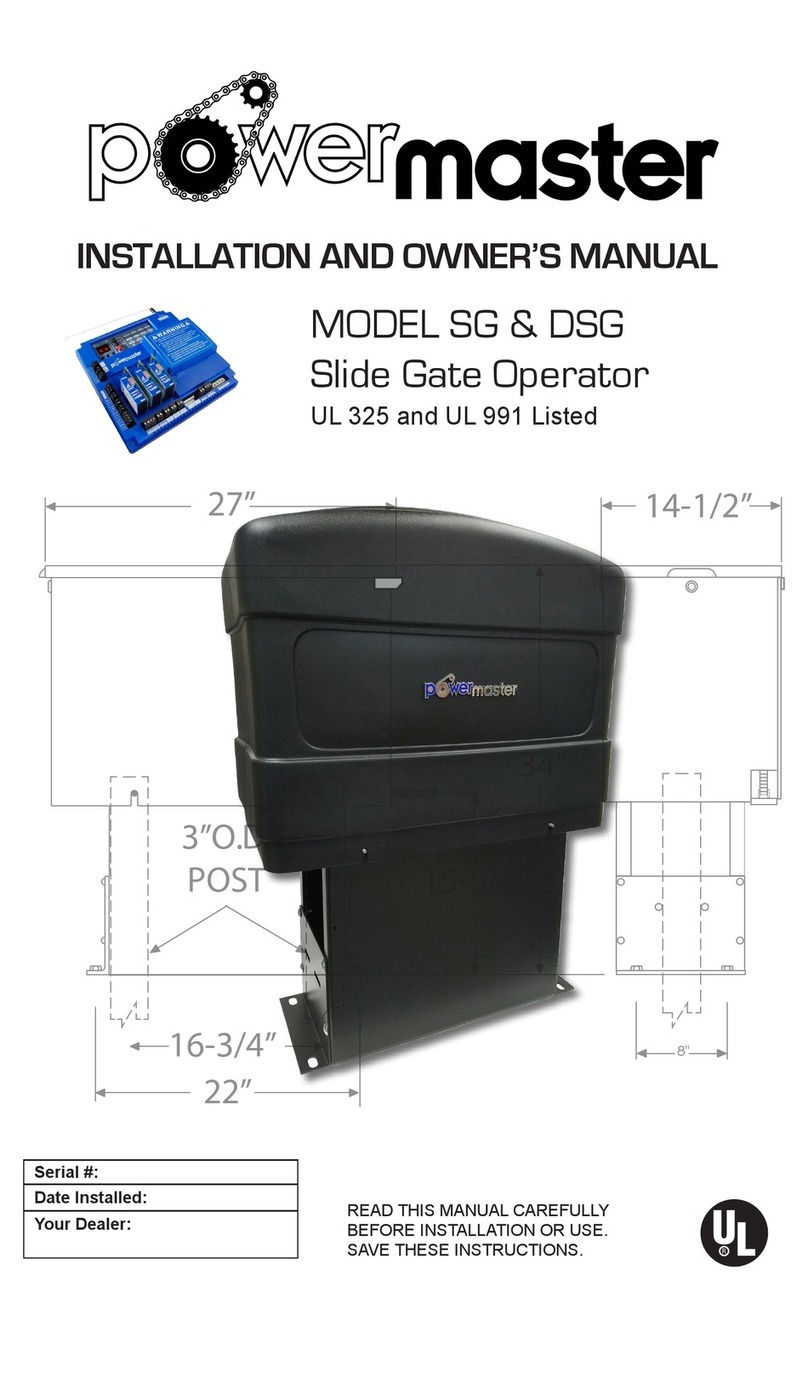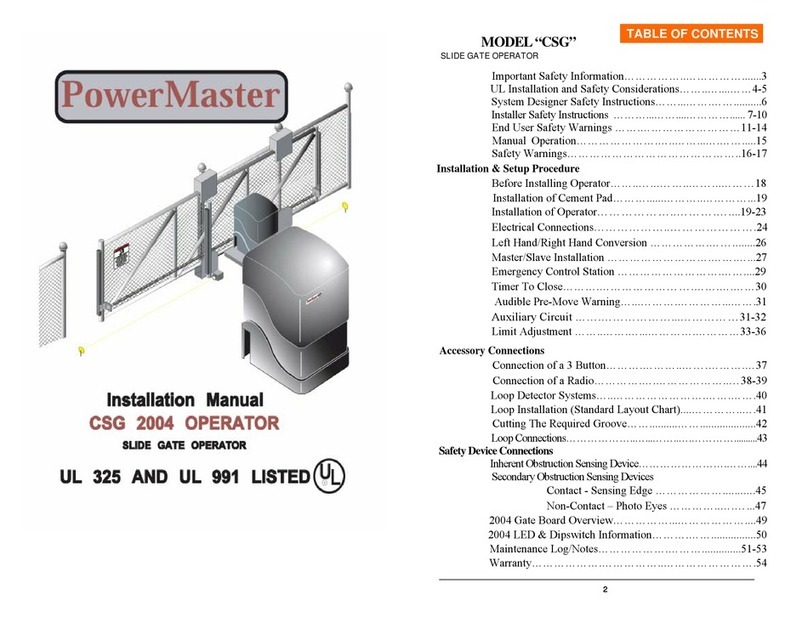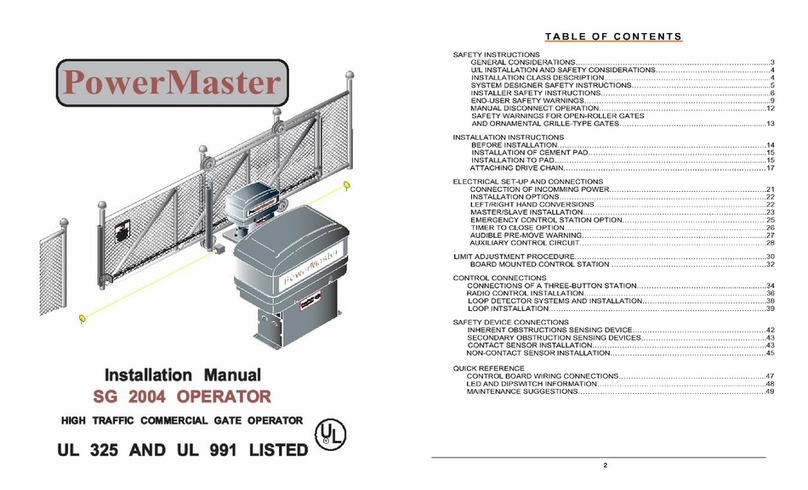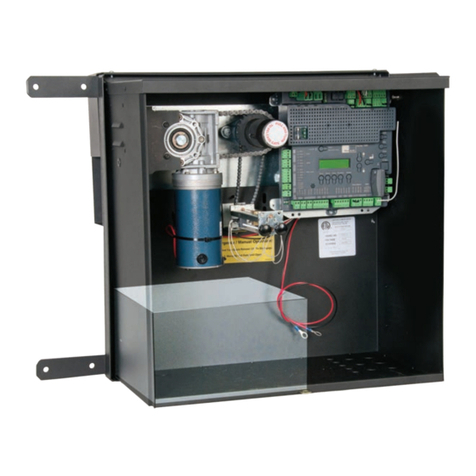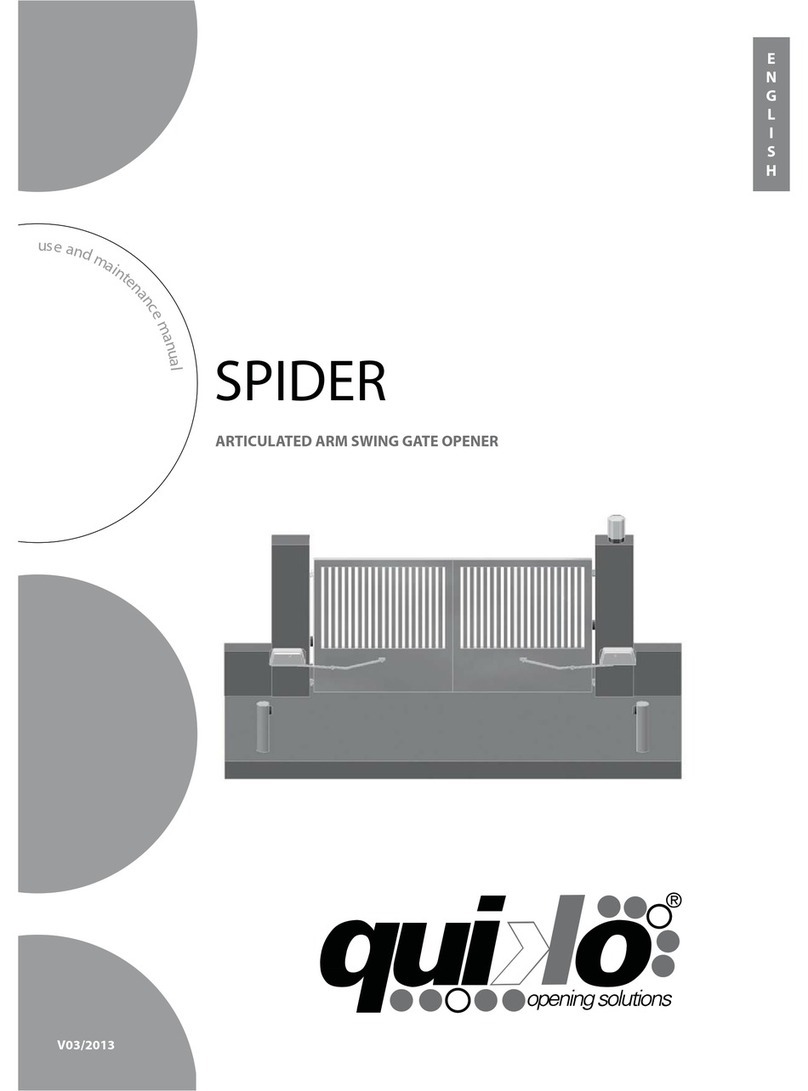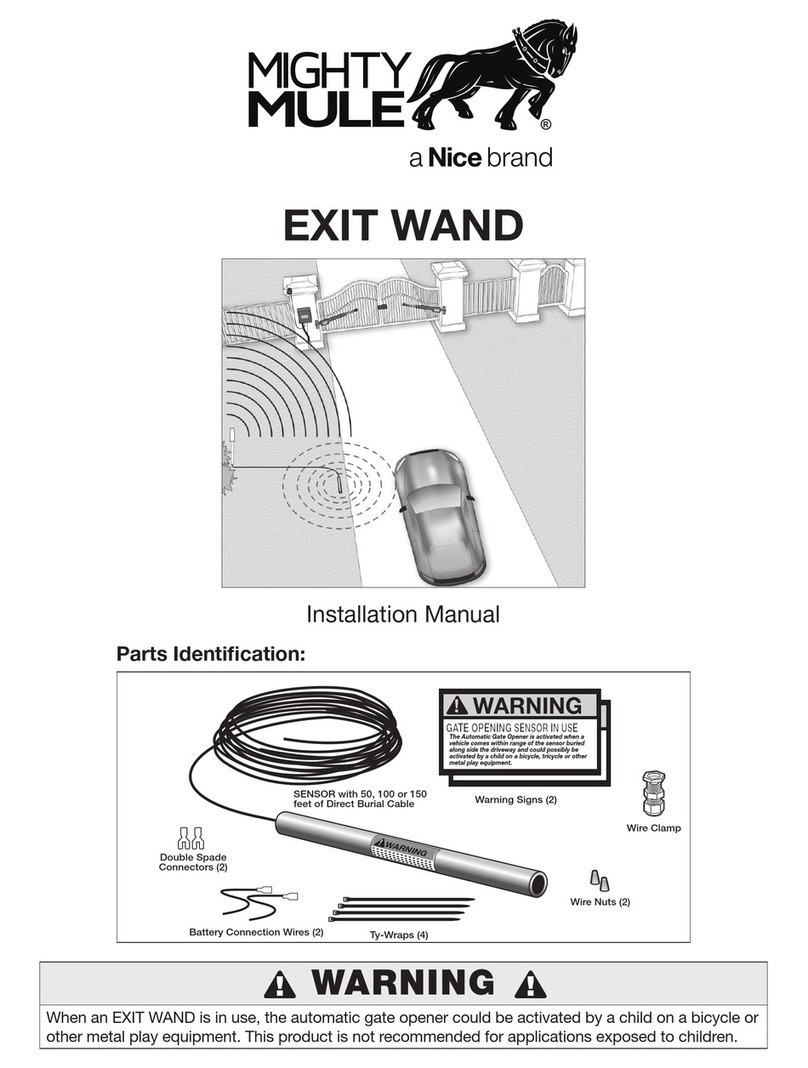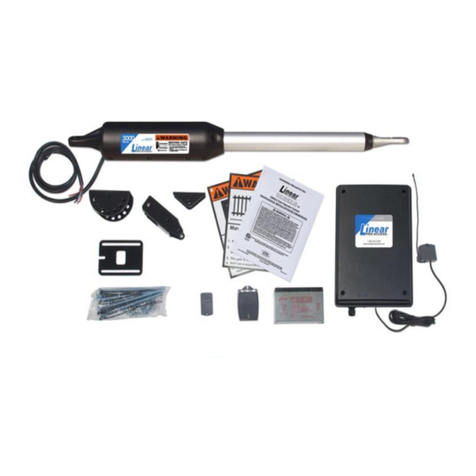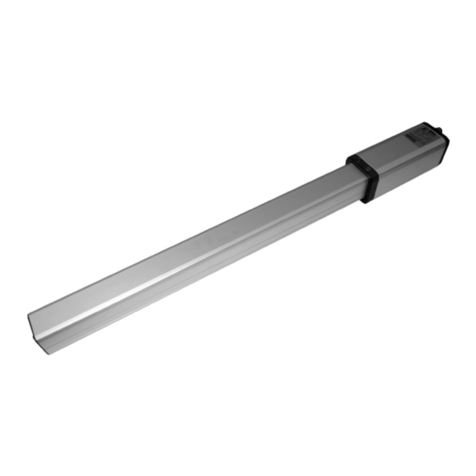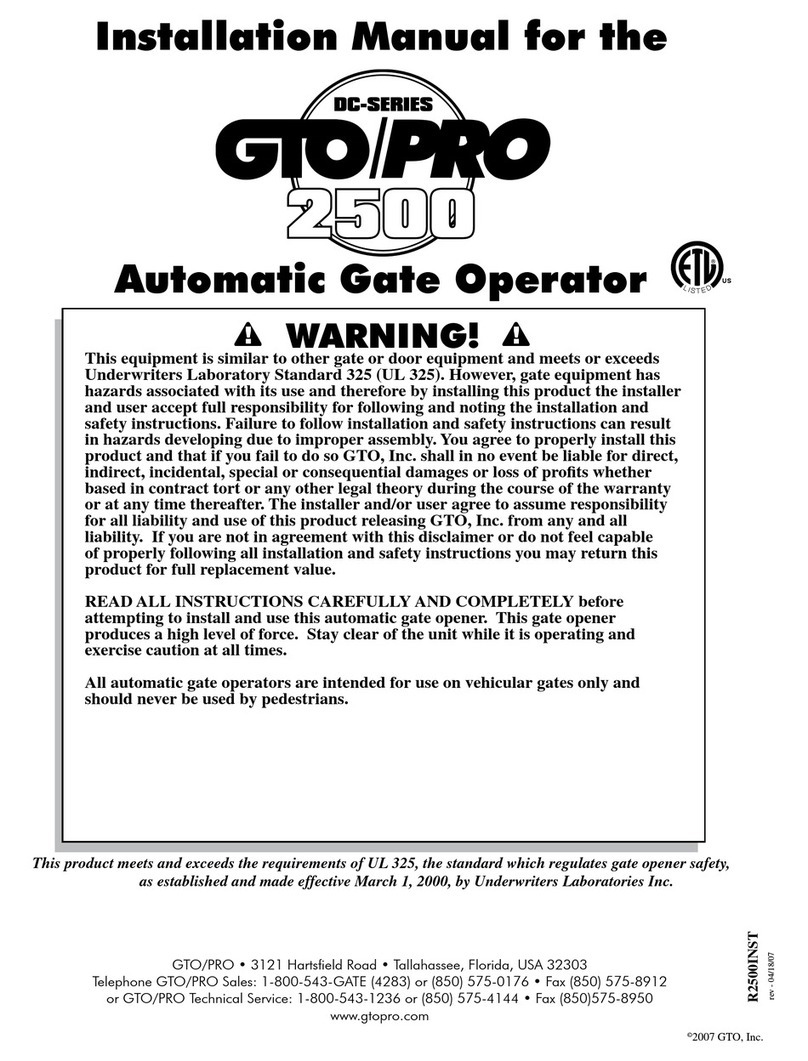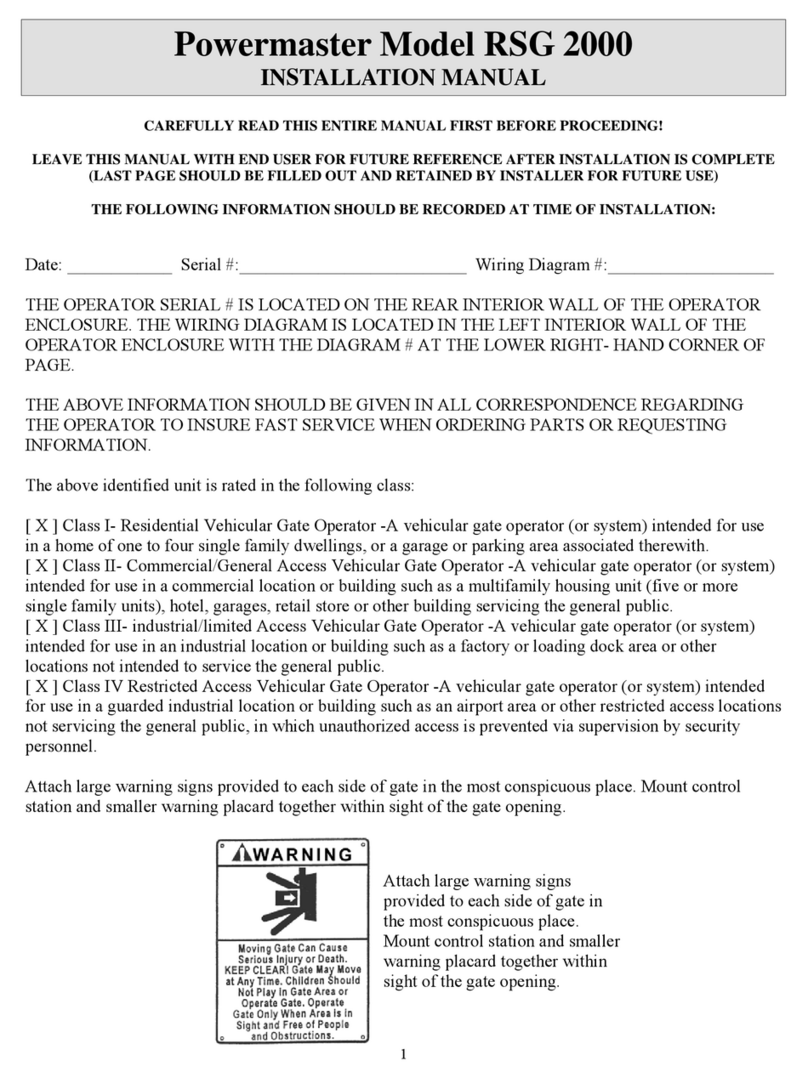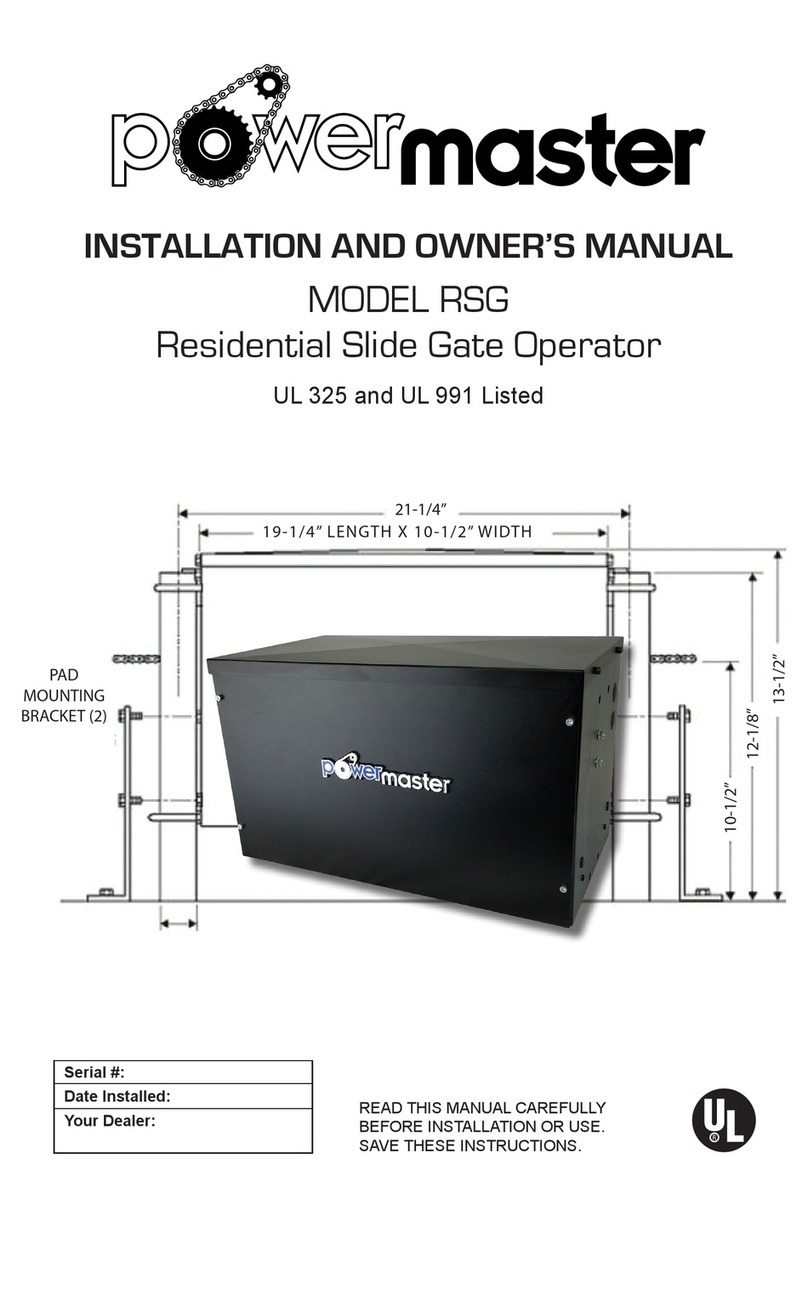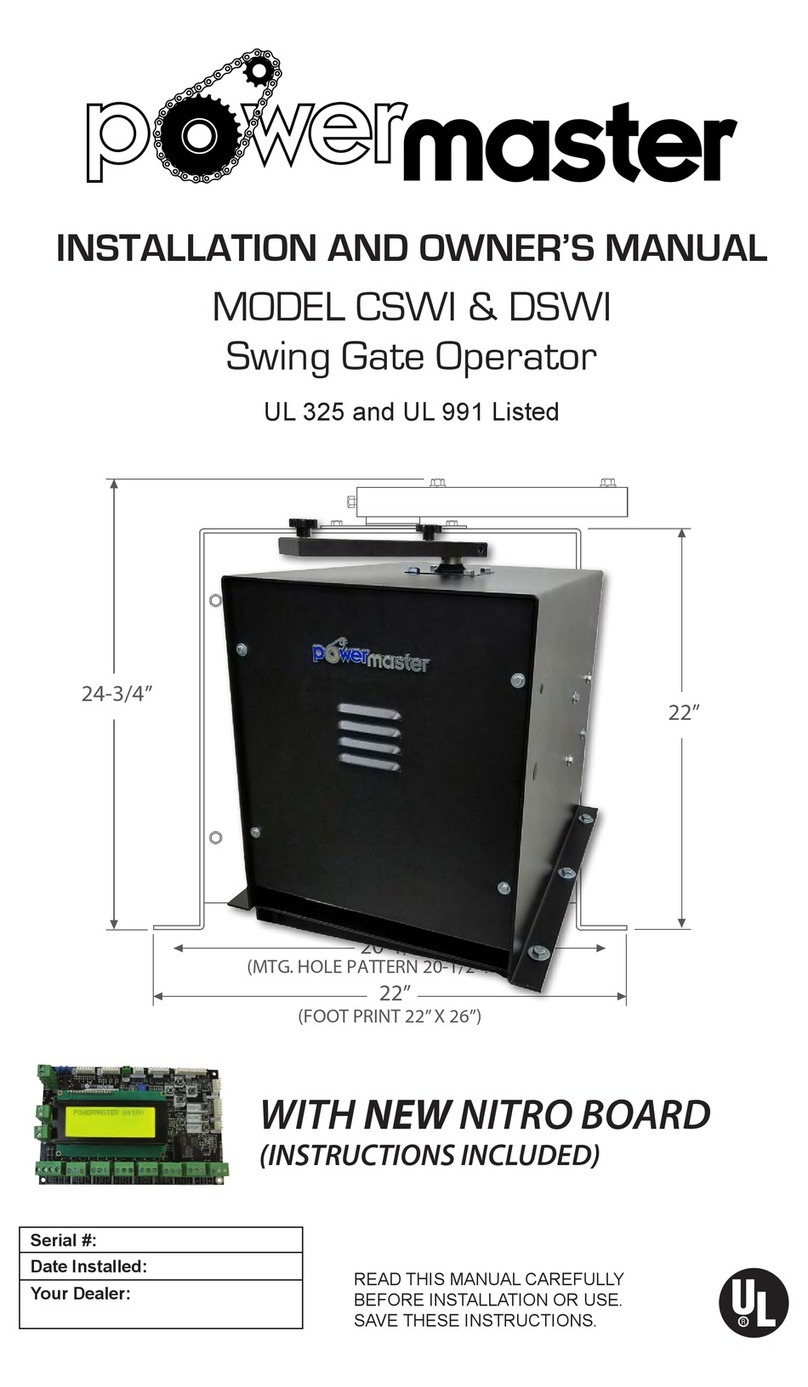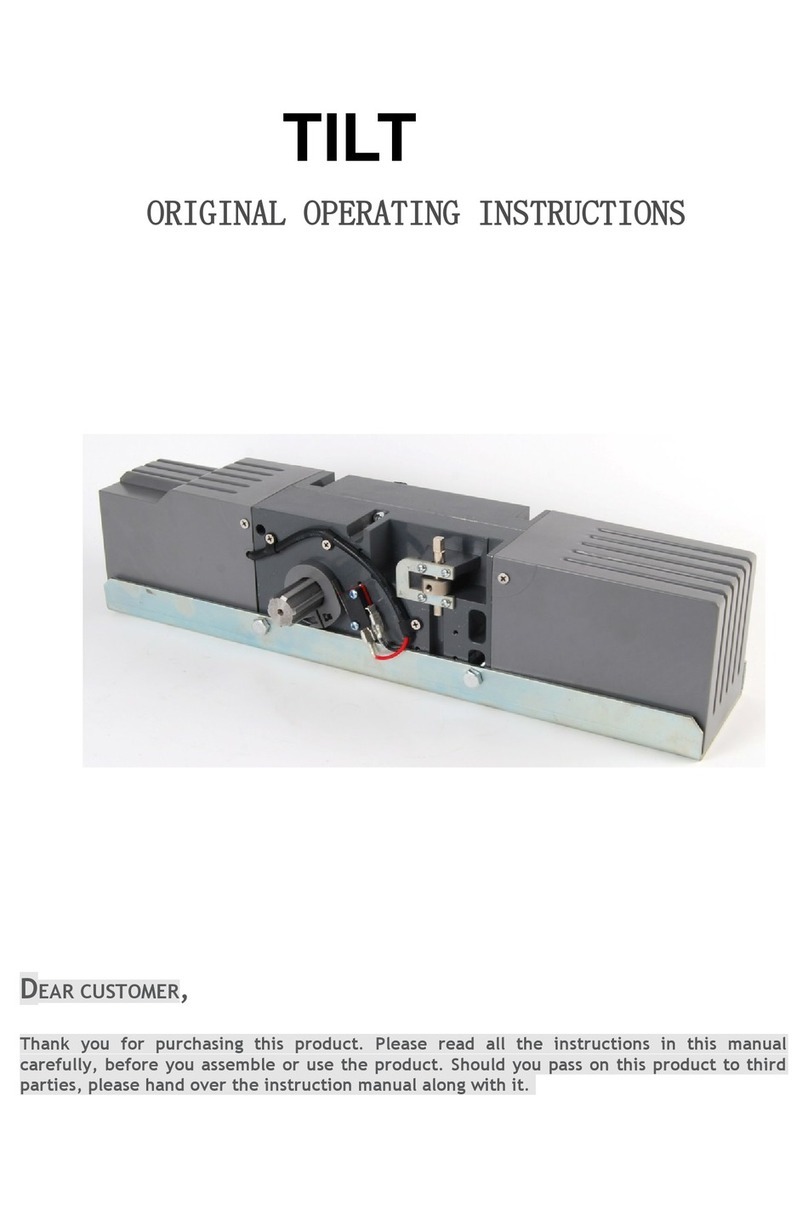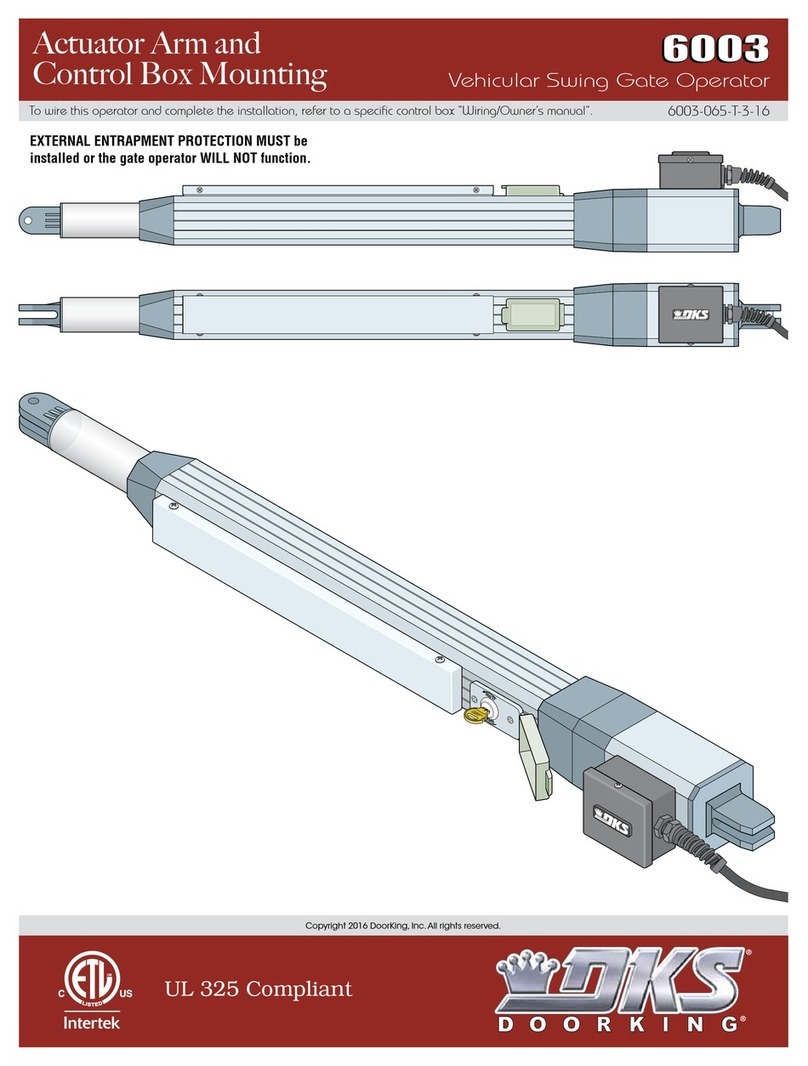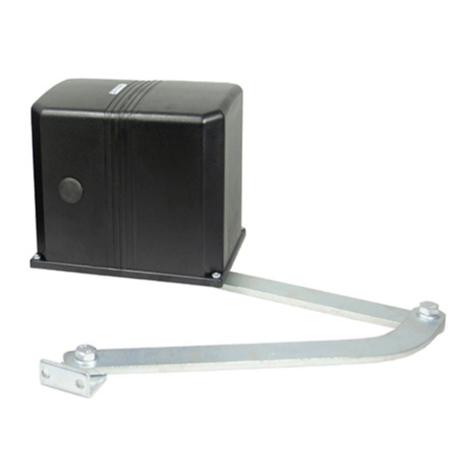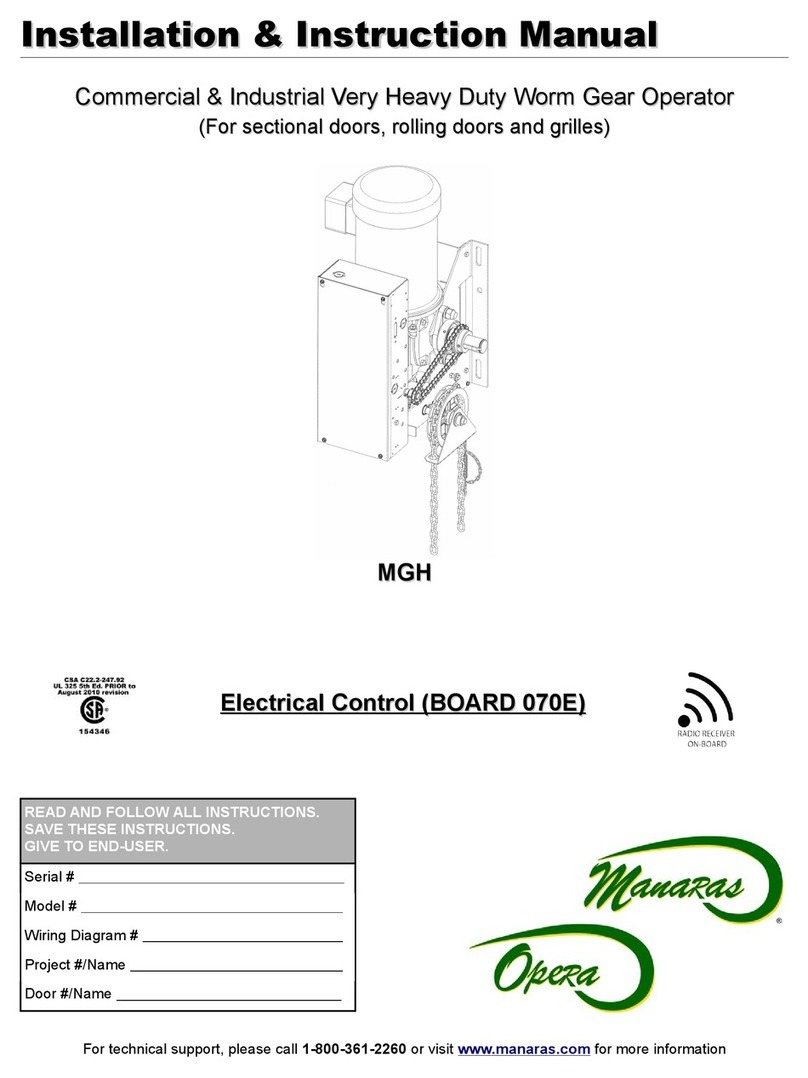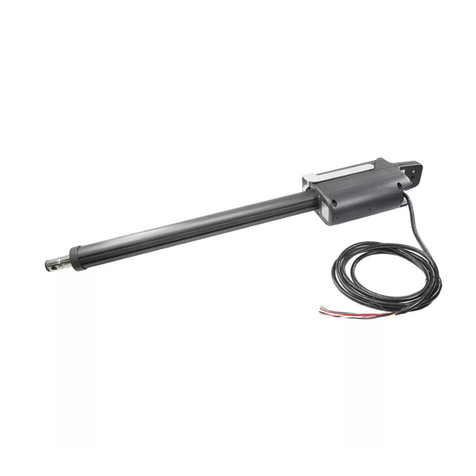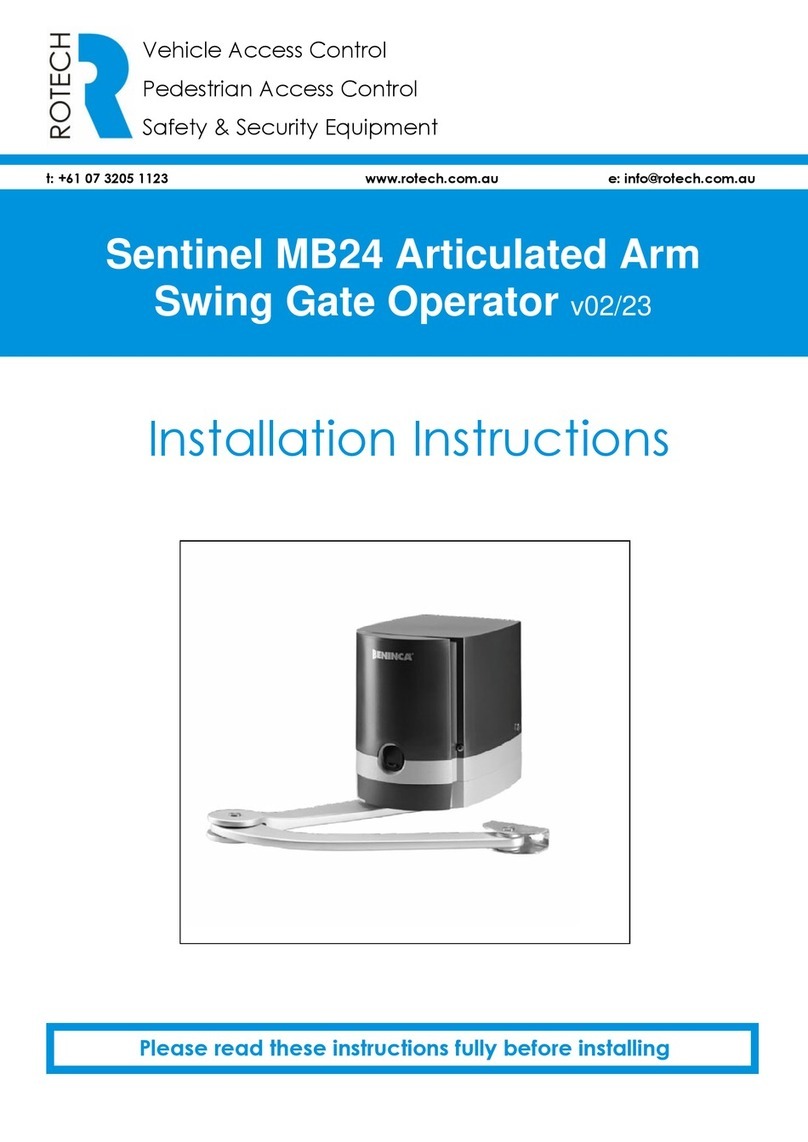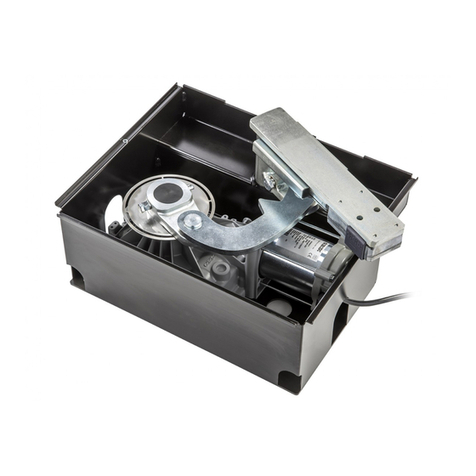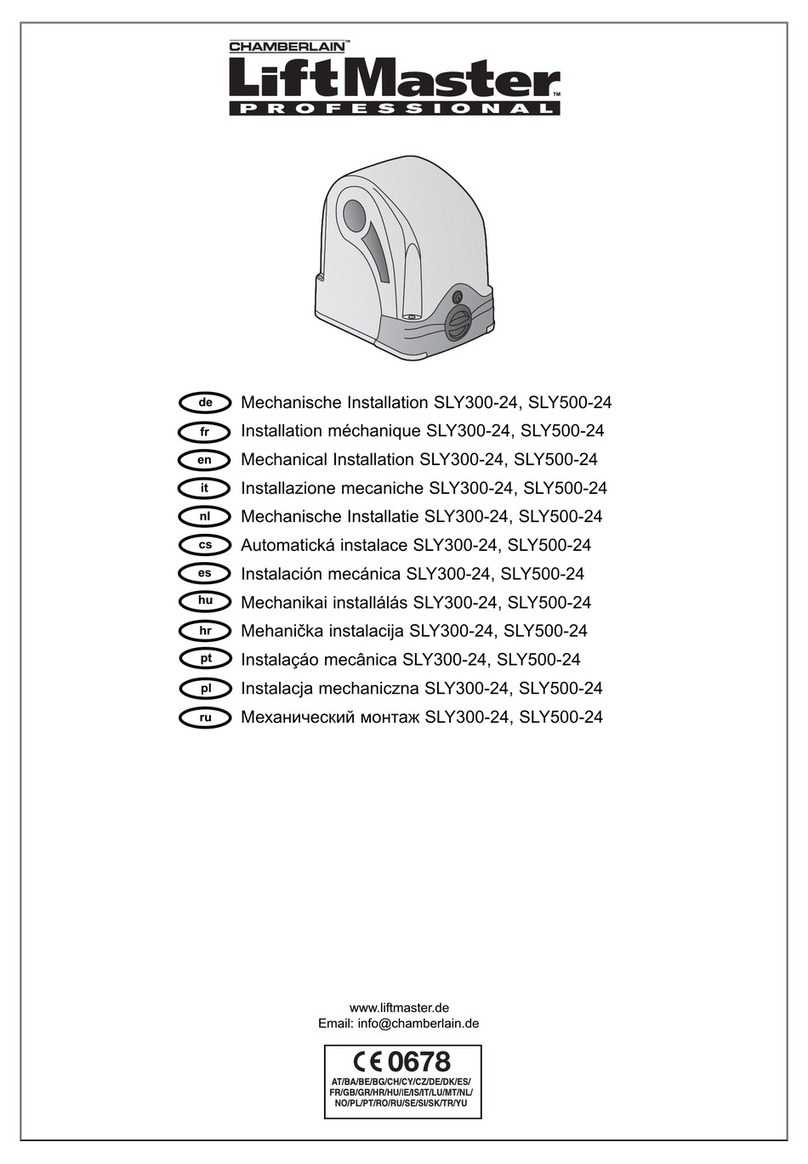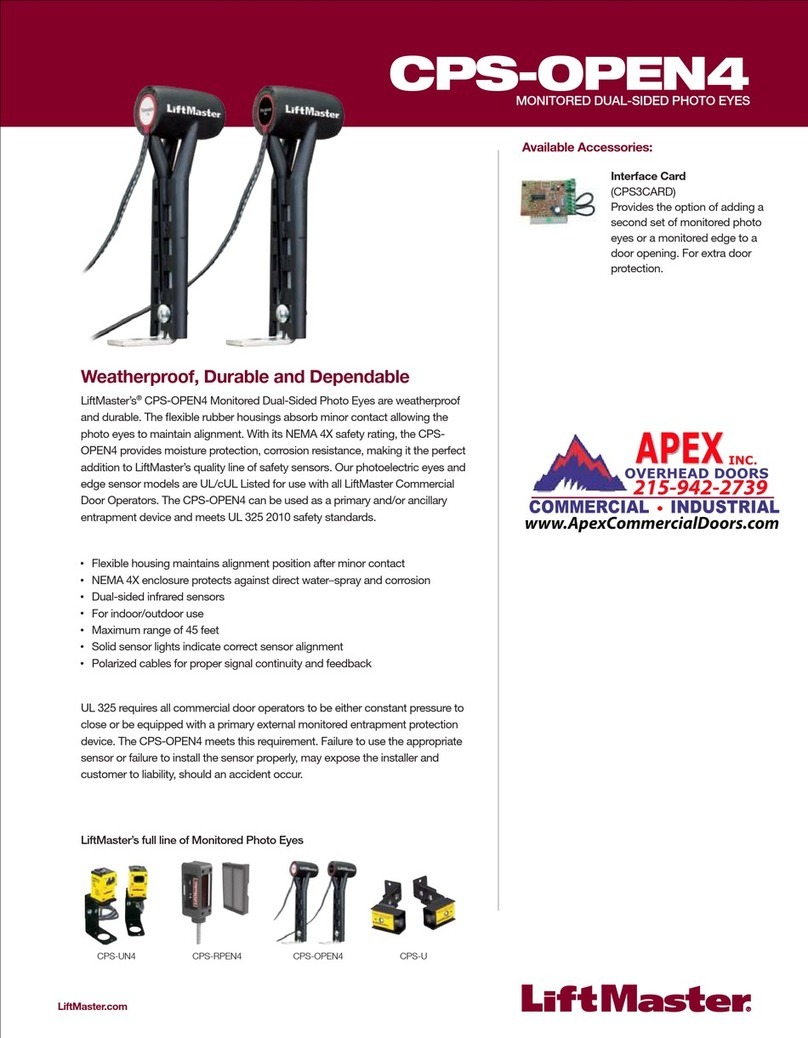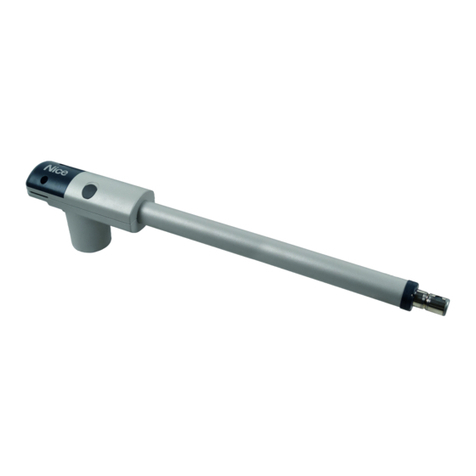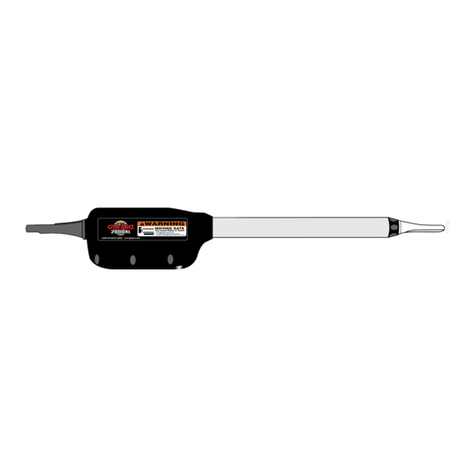IMPORTANT!
FORSLIDEGATEOPERATINGSYSTEMS
SAFETY IS EVERYONE’S BUSINESS
Automatic gate operators provide convenience and security to
users. However, because these machines can produce high
levels of force, it is important that all gate operator system
designers, installers, and end users be aware of the potential
hazards associated with improperly designed, installed, or
maintained systems. Keep in mind that the gate operator is a
component part of a total gate operating system.
The following information contains various safety precautions
and warnings for the system designer, installer and end user.
These instructions provide an overview of the importance of
safe design, installation, and use.
Warnings are identified with the ▲symbol. This symbol will
identify some of the conditions that can result in serious injury or
death. Take time to carefully read and follow these precautions
and other important information provided to help ensure safe
system design, installation and use.
▲WARNING:Gate operators are only one part of a
TOTAL GATE OPERATING SYSTEM. It is the
responsibility of purchaser, designer, and installer to ensure
that the total system is safe for its intended use. All
secondary entrapment safety devices must be
RECOGNIZED by U/L to ensure the safety of the complete
operating system.
▲WARNING:This operator is only intended for installation
on gates used for vehicular traffic. A separate pedestrian
access opening shall be provided which is designed to
promote pedestrian usage and shall be located such that
persons will not come in contact with the vehicular gate
during its entire path of travel.
4
U/L INSTALLATIONAND SAFETY
CONSIDERATIONS
INSTALLATION CLASSES
CLASS I – RESIDENTIALVEHICULAR GATE OPERATOR
A vehicular gate operator (or system) intended for use in
a home of one to four single-family dwellings, or a garage or
parking area associated therewith.
CLASS II–COMMERCIAL/GENERAL ACCESS VEHICULAR
GATE OPERATOR
A vehicular gate operator (or system) intended for use in a
commercial location or building such as a multifamily housing
unit (five or more single family units), hotel, garages, retail store
or other building servicing the general public.





















